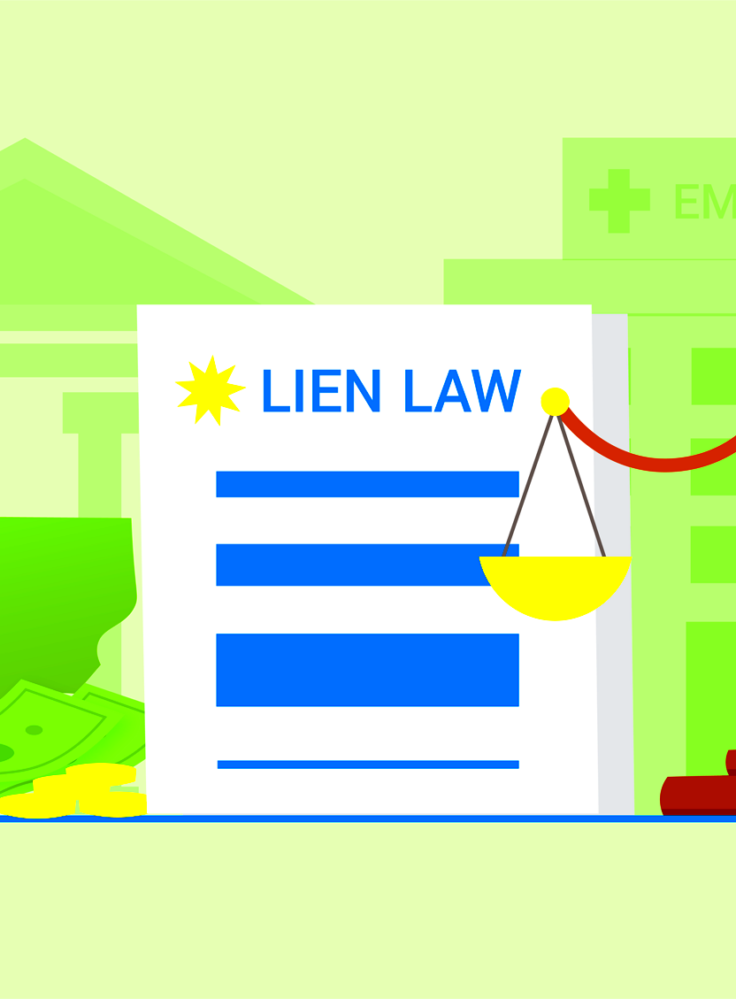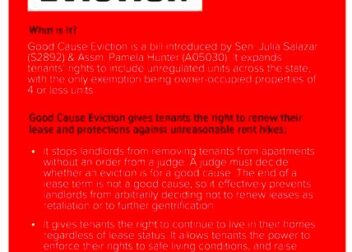A Summary of North Carolina’s Lien Laws for Contractors
In North Carolina it is essential for contractors to have knowledge of lien laws to safeguard their interests. These laws establish a system that enables contractors to secure payment for their services and materials. I recall my initial experience with lien laws being akin to maneuvering through a labyrinth. Grasping the workings of these laws can be vital in preventing disputes and ensuring fair compensation for your efforts.
North Carolinas lien regulations aim to guarantee that contractors and subcontractors receive compensation for their work on a project. These rules enable people and businesses that have supplied or materials to a property to file a claim against it in case they haven’t been paid. This claim known as a lien can be upheld through legal proceedings if required. It’s a safeguard that promotes equity, in construction endeavors.
Types of Liens Available for Contractors
In North Carolina contractors have different kinds of liens at their disposal to ensure they get paid. Each type has its own function and grasping their nuances can be essential. Lets take a look at the key ones.
- Mechanic’s Lien: This is the most common type of lien for contractors. It is filed by anyone who provides labor or materials for the construction or improvement of a property.
- Materialmen’s Lien: Similar to a mechanic’s lien, but specifically for suppliers who provide materials without labor.
- Subcontractor’s Lien: If a general contractor fails to pay a subcontractor, the subcontractor can file this lien to claim their unpaid dues.
- Architect’s and Engineer’s Lien: This is less common but allows architects and engineers to claim payment for their professional services.
Every lien comes with its set of criteria and procedures making it crucial to select the appropriate one according to your involvement in the project.
Requirements for Filing a Lien
When it comes to filing a lien in North Carolina there are a few key steps and things to consider. Its similar to getting ready for a test you have to be careful and well organized. Here are some points to remember.
- Preliminary Notice: Before filing a lien, contractors often need to provide a preliminary notice to the property owner and general contractor. This notice informs them of your intent to file a lien if payment issues are not resolved.
- Detailed Documentation: You must gather and provide detailed documentation of the work performed and materials supplied. This includes contracts, invoices, and any communication related to payment.
- Filing Deadline: There are strict deadlines for filing a lien. In North Carolina, you generally have 120 days from the last day of work or material delivery to file a lien. Missing this deadline can forfeit your right to claim the lien.
- Legal Description: The lien must include a precise legal description of the property where the work was performed. This ensures that the lien is properly attached to the correct property.
- Filing Procedure: The lien must be filed with the county clerk’s office where the property is located. Make sure to follow the proper procedure to ensure that your lien is recorded correctly.
Following these guidelines can safeguard your interests and make sure your lien holds up. While it may seem intricate, nailing it down is essential to ensure you get compensated for your efforts.
Deadlines and Time Limits for Lien Claims
When it comes to handling lien claims in North Carolina timing is key. I vividly recall my project where I nearly overlooked an important deadline for submitting a lien. That experience taught me a valuable lesson deadlines can determine the outcome of your claim. Being aware of the timelines can mean the difference, between receiving payment and enduring a protracted legal dispute.
In North Carolina the timelines for submitting a lien are rigid and must be adhered to with precision. Here are the important deadlines you ought to keep in mind.
- 120 Days: You generally have 120 days from the last date you provided labor or materials to file a lien. This is crucial as filing after this period may invalidate your claim.
- 30 Days Notice: Before filing a lien, you must often send a preliminary notice within 30 days of starting work or delivering materials. This notice is essential for informing the property owner and general contractor of your intent.
- 30 Days for Filing a Claim of Lien: After serving the preliminary notice, you have an additional 30 days to file the actual lien claim with the county clerk’s office.
- One Year for Enforcement: Once a lien is filed, you must enforce it within one year. If you don’t take action to foreclose the lien within this period, it can be deemed invalid.
Staying alert to these due dates safeguards your entitlement to receive payment. It’s similar to watching a clock closely—if you let an opportunity pass by, it could slip through your fingers.
Steps to Enforce a Lien
While enforcing a lien can be a task, following the right steps can help you ensure your payment. I recall my encounter with enforcing a lien it was quite daunting at first. However breaking it down into steps made a significant impact. Here’s a helpful guide to navigate you through the process:
- File a Lawsuit: To enforce a lien, you’ll need to file a lawsuit in the appropriate court. This is typically done in the county where the property is located. It’s essential to have all your documentation in order, including the lien and evidence of the unpaid work.
- Serve Legal Papers: Once the lawsuit is filed, you must serve the legal papers to the property owner and any other relevant parties. This formally notifies them of the legal action.
- Court Hearing: Attend the court hearing where you’ll present your case. Be prepared to provide evidence supporting your claim. This is where having detailed records and contracts comes in handy.
- Obtain a Judgment: If the court rules in your favor, you will receive a judgment. This judgment may include a court order for payment or a directive to enforce the lien on the property.
- Foreclosure: In some cases, you may need to take further action to foreclose on the lien, which could involve selling the property to satisfy the debt. This step is generally a last resort and requires additional legal proceedings.
While enforcing a lien can be a process diligently following these steps can yield a positive result.
How Liens Affect Property Sales
Grasping the impact of liens on property transactions can help you avoid challenges down the line. I remember a situation where a client faced difficulties in selling their property due to an existing lien. It serves as a reminder of the importance of resolving lien matters before listing a property for sale.
Here’s how liens can impact property sales:
- Title Issues: Liens create a cloud on the property’s title, making it difficult to transfer ownership. Buyers and their lenders often require a clear title before proceeding with a sale.
- Sale Delays: If there’s a lien on the property, the sale process can be delayed until the lien is resolved. This can cause frustration for both buyers and sellers, potentially jeopardizing the sale.
- Negotiation Leverage: Sometimes, the presence of a lien can be used as leverage in negotiations. Buyers may seek a lower price or demand that the lien be cleared before completing the purchase.
- Possible Foreclosure: In severe cases, if the lien is not resolved, it could lead to foreclosure proceedings. This can have long-term implications for the property owner and may drastically affect the sale.
Dealing with lien matters swiftly and making sure they are sorted out before selling a property can help avoid these challenges. It’s really about keeping things running smoothly and safeguarding your own interests.
Common Challenges in Lien Disputes
Handling lien disagreements can be quite challenging, resembling a journey through waters. I still remember my initial significant lien dispute; it was an eye opening experience that equipped me to better tackle surprises in the future. Being aware of these obstacles can assist you in avoiding issues and approaching disputes, with assurance.
Here are a few problems you may encounter when dealing with disputes over liens.
- Incomplete Documentation: One of the biggest hurdles is having incomplete or inaccurate documentation. This can include missing invoices, unverified contracts, or improper lien filings. In one case, a contractor’s claim was nearly dismissed because their paperwork was not in order. Always ensure your documentation is thorough and accurate.
- Legal Technicalities: Lien laws are filled with legal nuances that can be tricky to navigate. For instance, the exact wording required in lien documents can vary. I’ve seen cases where minor errors led to major issues. Consulting with a legal expert can help avoid these pitfalls.
- Dispute Resolution: Resolving disputes can sometimes be as complex as filing the lien itself. Negotiations can be tough, especially if the property owner disputes the claim. I’ve been involved in mediation where emotions ran high, and the key was staying calm and focused on the facts.
- Timing Issues: Deadlines are crucial, but sometimes, parties involved might delay or contest the process, leading to extended disputes. Keeping track of all deadlines and being proactive can help manage this challenge.
By recognizing these obstacles you can equip yourself more effectively to navigate conflicts. It’s all about being ready and taking initiative.
Best Practices for Contractors
When dealing with liens sticking to best practices can spare you from a lot of trouble. I remember a project where following these guidelines transformed a seamless experience into a more difficult one. These established practices play a role in ensuring that your lien claims are managed accurately and effectively.
Here are some key tips for contractors to keep in mind.
- Keep Detailed Records: Maintain comprehensive records of all work performed, materials supplied, and communications with property owners and general contractors. This includes contracts, invoices, and receipts. Detailed records are crucial if you ever need to file a lien.
- Send Preliminary Notices: Always send preliminary notices within the required time frame. This informs property owners and general contractors of your intent to file a lien, which can sometimes prompt payment before the lien becomes necessary.
- Understand the Law: Familiarize yourself with North Carolina’s lien laws and requirements. The more you know about the legal landscape, the better you can navigate potential issues. Don’t hesitate to consult with a legal professional if you’re unsure about any aspects.
- File Timely: Adhere strictly to deadlines for filing liens and other necessary documents. Timeliness is key to ensuring your claim is valid and enforceable.
- Communicate Clearly: Keep open lines of communication with all parties involved. Clear communication can prevent misunderstandings and resolve issues before they escalate into disputes.
By following these guidelines you can make your lien management process more efficient and minimize the chances of conflicts. Its about taking a proactive approach and being ready for any situation.
Frequently Asked Questions
It’s normal to have inquiries about lien laws and procedures, particularly if you’re not familiar with them. I recall feeling inundated with questions when I started out. To assist in addressing concerns here are some commonly asked questions:
- What is a lien? A lien is a legal claim against a property for unpaid work or materials provided. It gives contractors and suppliers the right to seek payment through the property if necessary.
- How do I file a lien? To file a lien, you need to prepare and submit a lien claim to the county clerk’s office where the property is located. Ensure you follow all legal requirements and deadlines.
- What happens if a lien is not paid? If a lien is not paid, the lienholder may pursue legal action to enforce the lien, which could include foreclosure proceedings on the property.
- Can I file a lien if I have a contract dispute? Yes, you can file a lien even if there is a contract dispute, as long as you meet the legal requirements for filing a lien and the work or materials provided were not paid for.
- How long does a lien stay on a property? A lien typically remains on the property until it is paid or legally resolved. The specific duration can vary based on the circumstances and local laws.
These responses can serve as a basis and assist in clearing up any misunderstandings about lien regulations. If you have worries or intricate matters it’s wise to consult an expert for guidance.
Conclusion
Navigating lien laws in North Carolina can be quite a task. However grasping the details of these rules is essential for contractors. I’ve witnessed how a solid understanding of these factors can turn a project into a more seamless experience. Keeping up with timelines knowing the different types of liens and adhering to guidelines will empower you to manage lien claims with greater efficiency.
Based on what I’ve seen in my life I believe that being well prepared and paying close attention to detail are crucial when dealing with lien problems. Maintaining records being aware of the legal obligations and taking steps can truly make a significant impact. Its not only about having knowledge of the law but also using it judiciously to safeguard your hard earned efforts and secure fair reimbursement.
Keep in mind that each project has its own set of challenges and understanding lien laws well can assist you in steering clear of typical mistakes and resolving conflicts smoothly. When necessary don’t hesitate to seek counsel and make sure to stay informed about any legal updates. By adopting the approach you can transform the intricacies of lien laws into chances to secure your rightful payment and uphold your professional reputation.


